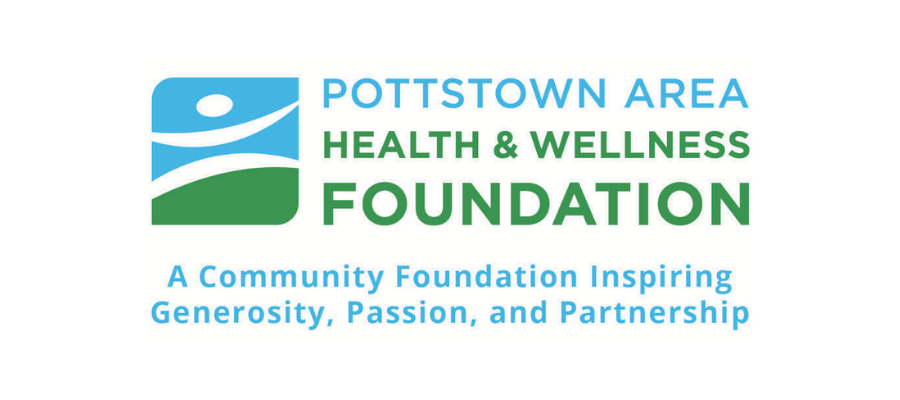Headache Help
Headache disorders are among the most disabling conditions worldwide. Chronic headaches are a leading cause of missed work days for many in the workforce. The pain disrupts everything from daily productivity to major social events. Pottstown Area Health and Wellness Foundation (PAHWF) shares helpful ideas for preventing and easing the pain …
June is Migraine and Headache Awareness Month. Considering the prevalence, many are dealing with a headache right now while reading this. Although headaches vary in type and severity, they often share common methods of prevention and treatment.
Triggers & Remedies

Weather
Changes in barometric pressure, the air all around us, have a significant effect, especially for those who suffer from chronic headaches. Weather fronts are known to drastically increase headache complaints, according to the National Headache Foundation.
Increases in sinus pressure from weather events, as well as allergies and illness, fluctuate even throughout the same day. In addition to affecting sinuses, weather also may affect brain chemistry and induce a headache. Plus, temperature and humidity changes can worsen a headache caused by something else.
Monitor weather conditions. If you seem sensitive to these changes, try to remain in a climate-controlled environment when air quality is poor or the weather bothers you. Consider treating these headaches with allergy medicine instead of an analgesic. Your physician can provide suggestions based on your health.
Stress
Tension headaches are the most common type, along with migraines and cluster headaches. They are associated with dull, aching pain, along with tightness and tenderness around the head, neck, and shoulders. As per their name, they feel “tense.” Tension headaches, as well as other types of headaches, can be triggered by mental and physical stress and anxiety.
Find an outlet for stress and make it a habit. By regularly strengthening your “relaxation muscle,” you help your body and mind better handle stress when it does occur. This improves overall health, including things like blood pressure, bone strength, and muscle aches. It also helps prevent headaches. When headaches do occur, low-intensity exercise may offer relief. A walk in the park, yoga, or light stretches can release feel-good hormones and ease tension.
Aim for at least 20 minutes of heart-elevating exercise daily. This increases blood flow, releases stress, and keeps away common headaches.
Food
Many who suffer from headaches, especially migraines, have food triggers. According to the American Migraine Foundation, common culprits include alcohol (specifically red wine), aspartame sweetener, beans, caffeine, cheese, yogurt, foods with MSG additive, and processed meats. All of these do not bother everyone. Some migraine sufferers are not affected by any foods; others may find a completely different food associated with their pain.
Focus on eating a healthy diet while determining which foods, if any, to avoid. Limit fast food. Instead, focus on making food fast. Keep chopped veggies and fresh fruit conveniently at hand. Cook in advance of busy days to have home-prepared meals available, which tend to be lower in sodium and fat. Choose lean protein like fish high in omega-3s. Make calories count while you ensure your intake is not the cause of your headache.
Keep a Headache Journal
Keep a journal to track headache occurrences. Note the weather conditions to determine if there is a connection. Consider uploading a phone app to monitor current conditions and learn of any weather sensitivities. Migraine Buddy is a free app that helps track. Weather.com also provides specifics on humidity and pollutant levels.
Track all the food you eat, including a random chocolate or flavored coffee. Also note the times you eat. Perhaps a bedtime cup of herbal tea leads to a morning headache. Look for patterns.
Note your daily schedule. Do you tend to suffer headaches on days in the office? Step outside for fresh air during a break. Stay hydrated with water at your side, especially through long meetings. Maybe meetings are your trigger. Although unavoidable, you can adjust your pre- and post-meeting routine to include a 2-minute meditation or some deep breathing.
Journaling your headache symptoms and the circumstances surrounding them can be tedious. However, the effort helps individuals and their healthcare providers uncover the cause of headaches for efficient, effective treatment.
Get a Plan
Before you begin a new workout or join a sports team, have a routine physical with your primary care provider. If you need a physician, visit the CHDC, a grantee of PAHWF that provides affordable health services for the entire family. Once your doctor evaluates you to officially diagnose asthma/allergies, an asthma treatment plan can be created. This physician-approved plan will include a combination of identifying triggers, monitoring lung function and symptoms, and medication.
An allergy treatment plan and controlled symptoms will allow you to determine your best exercise program. Many competitive athletes succeed despite their asthma. Being able to control symptoms, and consistently monitoring them, allows safe physical exertion. With proper care, this exertion can continue to increase to improve symptoms and overall quality-of-life.
Emergency Help
Seek emergency care if you experience any of the following:
- a sudden, terrible headache
- a headache with a fever, stiff neck, mental confusion, seizures, double vision, weakness, numbness, or trouble speaking
- a headache after a head injury
It may signal something serious, so it is best to get professional help. Dial 911 or visit your nearest hospital emergency department.
Sources
National Migraine & Headache Awareness Month
